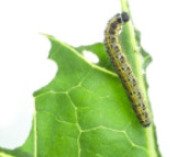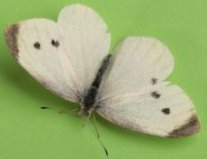Plant Pest

One of the most identifiable garden plant pests is the caterpillar. Some look fuzzy and cute while others look worm-like in appearance. But regardless of how they may look they are up
to no good when near or on your vegetable plants.
Caterpillar life cycle 2-6 weeks
Caterpillars are the larvae of butterflies and moths whose primary function is to eat, grow, pupate and emerge as adult moths or butterflies.
But unlike most garden pests, caterpillars are unique in what they eat. They have a very limited diet and most species will only eat the leaves of a single type of plant. Usually this is not a problem because nature has given the butterfly and moth the instinct to scout out a host plant as a home for her eggs. And as a vegetable gardener, if one of your vegetable plants is what she is searching for, then it becomes fair game to the butterfly.

Caterpillars have chewing mouth parts that feed on their host plant by eating holes of various sizes in leaves until nothing is left but the leaf vein. Usually this is not life-threatening to your crops, but your vegetable plants do look unsightly to look at thereby encouraging most vegetable gardeners to rid their crops of this plant pest.
Another Plant Pest is The Cabbage Worm
Worthy of note, is the persistent "Imported Cabbage Worm." This vegetable pest can wreak havoc to farm crops where vegetables are produced on a large scale. However, for us part-time or hobby gardeners their damage will be minor if you check your vegetable crops on a regular basis and remove any you see.
Other than eating leaves, these vegetable garden pests will often penetrate the head of cabbage or get into the developing flower (i.e. the part we eat) of broccoli, cauliflower or any other member of the cabbage family.
One way of reducing your frustration caused by these garden pests is by planting crops early in the season before the cabbage worm population has built up significantly. If you plant too late from about mid-July onward, then you will find your time consumed getting rid of this pest.
Checking your vegetable plants on a regular basis for caterpillars is part of your gardening efforts, but may I remind you to also look above and around especially during butterfly season for any indication that the cabbage worm butterfly, or come to that any butterfly may be looking for a home for her eggs in your garden. Although butterflies look pretty and have their place in nature, they are also a garden pest, so do double duty in your regular gardening maintenance by checking under plant leaves for any sign of egg deposit. By removing any eggs you see will be one less plant pest you will eventually have to deal with.

Better known to gardeners as the cabbage butterfly, the adult is white with black tipped forewings and have two black spots on top of each of their forewings; males have one black spot.
Contrary to belief, butterflies do not harm vegetable crops, but some species feed on nectar of flowers yet other species do not feed at all they only drink.
Life cycle spring to first hard frost
For more information on this plant pest and other nasty critters, be sure to read vegetable garden pests
You can read more information on this pest at the University of California agriculture department.
As always
Happy Gardening
Copyright © 2008-2019 All rights reserved.